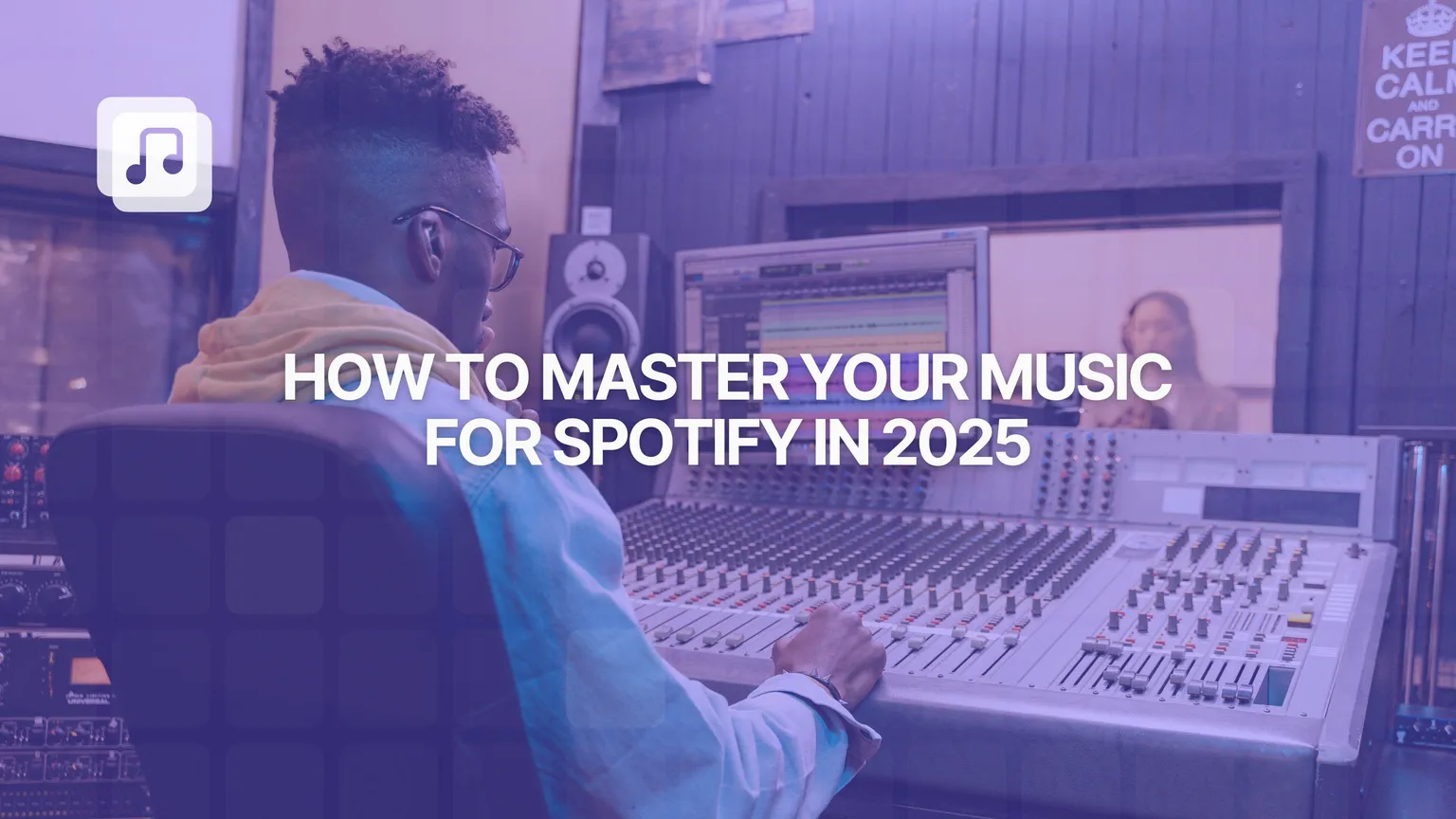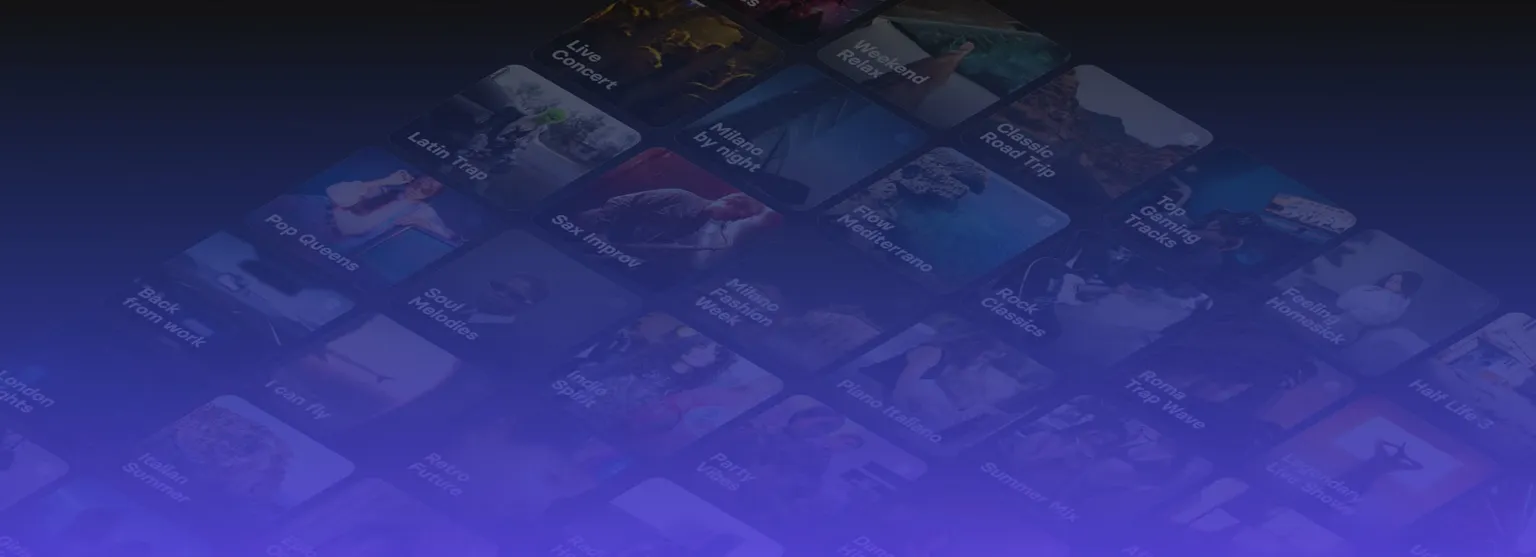
With the rise of digital streaming platforms, audio mastering has gone through a significant transformation. Just a few years ago, the goal was to make tracks as loud as possible—what was known as the "loudness war." But now, with loudness normalization implemented by platforms like Spotify, Apple Music, YouTube, Amazon Music and Tidal, the approach to mastering is much more about balance, clarity, and quality.
So, what does it really take to master your music effectively for Spotify in 2025? What are the technical benchmarks you need to meet? And which tools can help you achieve a professional, streaming-ready sound?
This comprehensive guide will answer all those questions. We’ll show you how to optimize your songs for the major streaming platforms, especially Spotify, and help you avoid common pitfalls.
Here's what we're are going to talk about:
- Mastering and loudness normalization
- Recommended mastering levels for Spotify and other platforms
- How to master your track for Spotify
- Best mastering plugins for streaming in 2025
Mastering and loudness normalization
When someone listens to your music on Spotify, what they hear doesn’t just depend on how “loud” your mix is. Spotify uses a process called loudness normalization, which automatically adjusts the volume of each track to match a consistent standard.
The measurement used here is LUFS (Loudness Units Full Scale), which gauges the perceived average loudness of a song. Spotify’s reference level is –14 LUFS integrated, with a –1 dB True Peak limit to avoid distortion, especially after compression (e.g., into OGG or AAC formats).
This means if your track is too loud, Spotify will turn it down. If it’s too quiet, it may be boosted—but that can introduce unwanted noise or artifacts if your mix isn't clean and dynamic enough.
Recommended mastering levels for Spotify and other platforms
Here’s a quick comparison of loudness (LUFS) and True Peak targets for the major streaming platforms in 2025:

These platforms are converging toward similar standards. That means you can now aim for a universal master that sounds great across all of them—no need for multiple versions.
How to master your track for Spotify: practical tips
1. Use accurate loudness metering tools
To ensure your track meets loudness and peak standards, you’ll need reliable metering plugins. Some of the most trusted tools include:
- Youlean Loudness Meter (Free & Pro versions)
- iZotope Insight
- NUGEN Audio MasterCheck
These plugins help you monitor integrated LUFS, dynamic range, and True Peak levels—and some even let you preview how your track will sound on Spotify or YouTube after normalization.
2. Balance volume and dynamics
While it’s possible to push your track up to –14 LUFS, it’s not always necessary or even desirable. In genres like acoustic, jazz, classical, or ambient music, a lower loudness target (like –16 LUFS) often sounds better and retains more natural dynamics.
The key is to strike a balance between loudness and emotional impact. A track that’s over-compressed may sound flat or fatiguing, even if it meets technical standards.

3. Watch out for true peaks
Many limiters measure in dBFS (decibels relative to full scale), but during conversion to lossy formats (like OGG or AAC), inter-sample peaks can cause unexpected clipping. That’s why it’s best to leave at least –1.0 dBTP (True Peak) of headroom.
Limiters like FabFilter Pro-L 2 or iZotope Ozone Maximizer offer advanced True Peak metering and oversampling to prevent these issues.
4. Test on multiple devices
Once your track sounds right in your DAW, listen to it on:
- Professional headphones
- Consumer earbuds
- Smartphone speakers
- Bluetooth speakers
- Within actual streaming platforms (if available)
This helps ensure your master translates well across all playback systems and listening environments.
After professionally mastering your track, it's essential to know the right steps to release it. That's why we've created a clear release checklist for you to follow, which you can find on our blog!
Best mastering plugins for streaming in 2025
Here are some of the top mastering plugins for streaming-optimized audio in 2025:
- FabFilter Pro-L 2 – Transparent limiter with presets for Spotify, Apple Music, and more.
- iZotope Ozone 11 – Full mastering suite with dynamic EQ, maximizer, stereo imaging, and codec preview.
- Youlean Loudness Meter 2 – Precise LUFS and True Peak measurement.
- NUGEN Audio MasterCheck – Simulates how tracks will sound after streaming platform normalization.
- StandardCLIP (by SIR Audio Tools) – Clean, flexible clipping to tame transients before final limiting.
- iMusician Instant Mastering – A fast, AI-powered tool with genre-based presets and unlimited previews.
It’s no longer about loudness: it’s about clarity
In the age of loudness normalization, the loudest track doesn’t win anymore. Streaming platforms level the playing field by adjusting playback volume, so hyper-compressed masters no longer have the advantage they once did.
Today, a great master is one that delivers clarity, consistency, and dynamic expression—not just volume. It should sound great on every system, and more importantly, move the listener.
After completing everything professionally and making sure to follow the standards of each platform, there’s only one thing left to do: publish your music and promote it the right way!
And this is exactly when Matchfy can be more useful than you might think: our platform allows you to promote yourself in a truly comprehensive way, giving you access to over 8 million playlists, 3,000 influencers, and 1,500 magazines and that’s not all!
Through our platform, you’ll also be able to run targeted social media campaigns across all major platforms: Instagram, TikTok, YouTube, and many more.

Conclusion
In today’s streaming landscape, mastering is no longer about chasing the loudest sound—it's about crafting a mix that is clear, emotionally impactful, and technically optimized for every platform. Understanding LUFS, True Peak, and the dynamics of loudness normalization ensures your track sounds its best—whether it's played on Spotify, YouTube, Apple Music, or anywhere else.
But even the most perfectly mastered track won’t reach its full potential if it doesn’t reach the right audience.
That’s where Matchfy steps in. After all the effort you’ve put into producing and mastering your music, it’s time to make sure it gets heard. Matchfy gives you access to a global network and it doesn't stop there: with targeted campaigns on platforms like Instagram, TikTok, YouTube, and more, you’ll be able to grow your fanbase and visibility in a strategic, scalable way.
Great sound is the foundation but smart promotion is what turns a great track into a career-defining moment. Let Matchfy help you bridge that gap and take your music from the studio to the spotlight.

